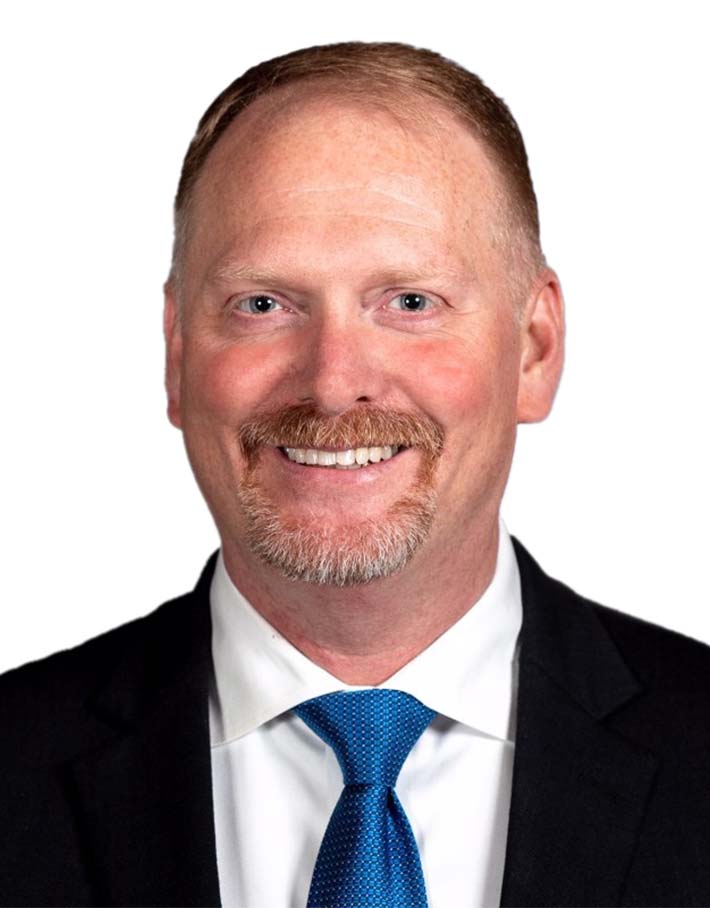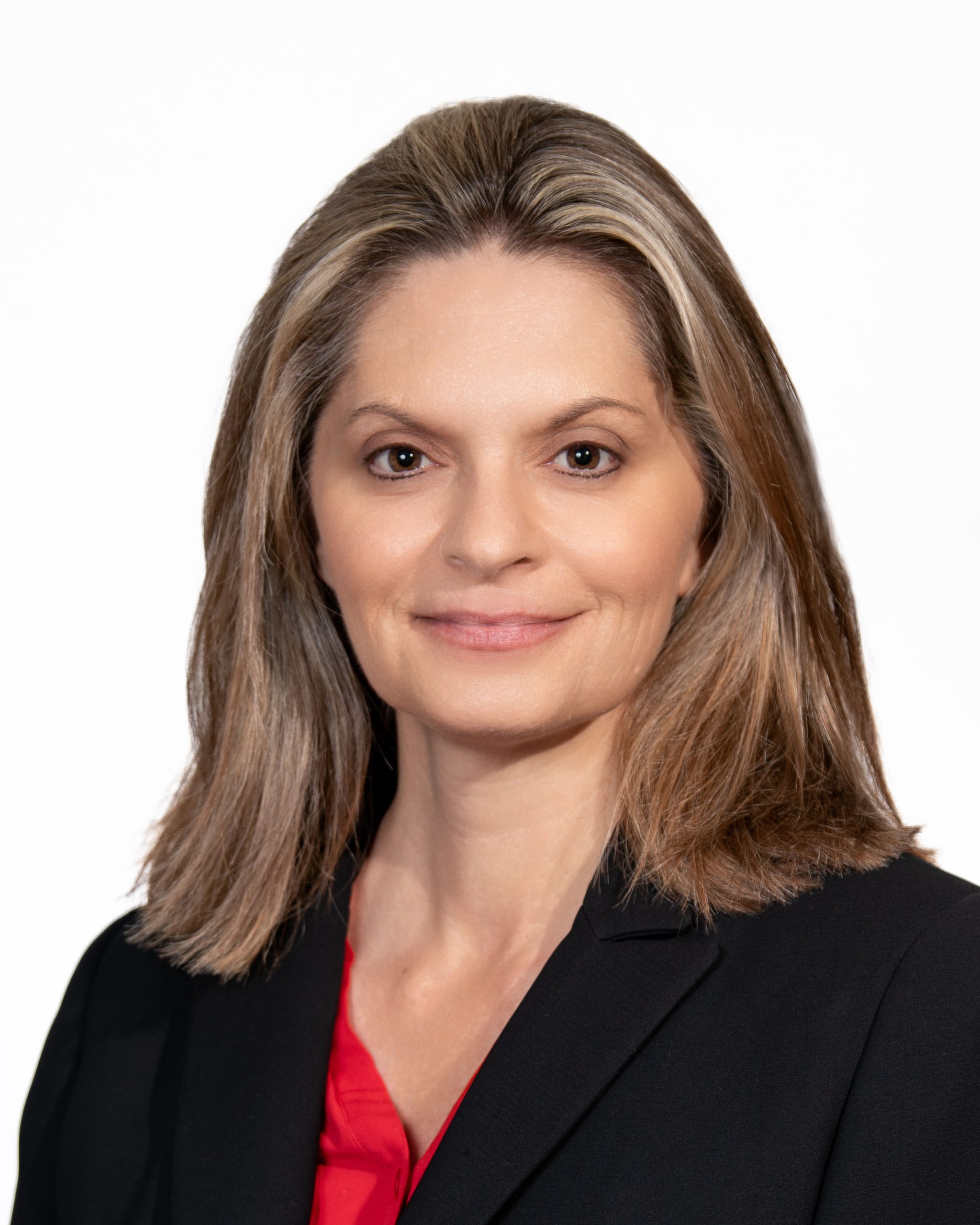Growth and Compliance: Navigating FINRA Registration Requirements
FINRA New Member and Continuing Member Applications
By Ed Wegener and Lisa Robinson
Subscribe to our original industry insights
In this episode of the Oyster Stew podcast, Ed Wegner is joined by Lisa Robinson, Managing Director at Oyster Consulting and former FINRA membership application expert. Together, they discuss how significant growth can affect broker-dealer FINRA registration requirements. Lisa leverages her extensive experience as Senior Director of the Membership Application Program (MAP) group to provide you with essential tips on registering your firm with FINRA and completing a Continuing Membership Application (CMA). From identifying key triggers like mergers and substantial asset transfers to understanding the importance of resolving outstanding customer claims, this episode is packed with invaluable insights to help you make informed decisions during your firm’s expansion journey.
Broker-Dealer Growth: What to Consider
When should you file a Continuing Membership Application with FINRA? Understand how mergers, acquisitions, and asset transfers trigger regulatory requirements.
FINRA MAP Rules: What You Need to Know
Understand Federal Rule 1017 and its implications for broker-dealers. Our experts help navigate when you need approval and the documentation required.
Preparing Your Firm for FINRA Filings
Learn about the key elements you need to include in your business plan for FINRA approval, and how to streamline the application process by anticipating FINRA’s requests.
Common Pitfalls and How to Avoid Them
Our experts explain the importance of early planning and due diligence. Being prepared before filing can save time and reduce back-and-forth with FINRA.
Insights on FINRA’s Priorities
Discover how FINRA views different business lines and products, such as crypto and life settlements, as well as the importance of tailoring your application to align with FINRA’s regulatory focus.
Additional Resources
Building a Robust Broker-Dealer Compliance Framework
Registering a Broker-Dealer: The NMA and CMA Process
FINRA Registration and Continuing Member Application Support
Registering as a broker-dealer involves a detailed application process reviewed by FINRA’s Membership Application Program group. Oyster Consulting’s regulatory compliance and registration experts simplify this process by helping you create a detailed business plan and customized compliance policies to meet FINRA broker-dealer requirements, and by providing guidance on net capital requirements, financial reporting, accounting statements and maintaining adequate financial records.
Oyster Consulting offers a wide range of outsourced compliance and finance services, including Outsourced CCO (Chief Compliance Officer), FINOP (Financial and Operational Principal) and Supervisory Principal services. Experienced compliance consultants ensure that your compliance program is reasonable, cost-effective, and aligned with regulatory requirements.
Transcript
Transcript provided by TEMI
Bob Mooney: Welcome to the Oyster Stew Podcast. I’m Bob Mooney, General Counsel for Oyster Consulting. In this episode of the Oyster Stew Podcast, Ed Wegener is joined by Lisa Robinson, Managing Director at Oyster Consulting. Lisa was the manager of the FINRA Membership Application Team and is now our membership expert. They discuss how significant growth, whether organic or through acquisitions, can affect broker-dealer registration requirements. Today, you’ll learn when you should file a Continuing Member Application with FINRA and what documentation is required; key elements to include in your business plan; how to streamline the application process by anticipating FINRA’s requests; common pitfalls and how to avoid them; and, insights on FINRA’s priorities. Let’s get started, Ed.
Ed Wegener: Well, thank you and hello everyone. I’m Ed Wegener, and I am the head of Governance, Risk, and Compliance for Oyster Consulting. I want to welcome you to what has been a continuing conversation that we’ve been having around how investment advisors and broker dealers should be addressing significant growth. In an earlier podcast, we discussed the impact that such growth has on a firm’s infrastructure and ways firms can prepare for that impact. Today, we want to turn our attention to the impact that growth can have on broker-dealer registration requirements. I’m very fortunate to have with me today Lisa Robinson, who’s going to join me in this discussion. Lisa is a Managing Director at Oyster. Prior to joining Oyster, Lisa worked for FINRA and was responsible for running their membership application department. Her guidance has been extremely helpful for our clients – they’ve navigated tricky issues that come along with the new and continuing membership process. So, I want to welcome you, Lisa.
Lisa Robinson: Hi, Ed. Thanks so much. Great to be here.
Ed Wegener: So why don’t we start, Lisa, with talking about it as broker dealers consider growth, both organic and growth that comes through acquisition – what should they be thinking about from a FINRA registration standpoint?
Lisa Robinson: So, depending on the size of the growth, you might have to file a Continuing Member Application with FINRA prior to whether it’s a transaction or just hiring a lot of new people. There are a lot of considerations that are outlined in the FINRA MAP (membership application process) rules that would determine whether or not an application would need to be filed.
Ed Wegener: What are some of the things, when you think about those rules, that might give rise to needing a Continuing Membership Application?
Lisa Robinson: So,0 let’s talk about acquisitions or mergers to start with. FINRA Rule 10-17 outlines events that would require an application for approval if there were a merger of one broker-dealer with another broker-dealer. And the exception is, if both firms are members of the NYSE or if the surviving entity would continue to be a member of the NYSE. Another event requiring application would be if there’s a direct or indirect acquisition by a member of another member. Or, what we see more commonly, I think, is the asset transfers, and that gets a little complicated.
For FINRA requirements for an asset transfer, it’s when there’s a direct or indirect acquisition or transfer of 25% or more of the member’s asset, or any asset business line of operation that generates revenues composing 25% or more in the aggregate of the members’ earnings measured on a rolling 36-month basis. And I know that’s a mouthful, right? But it basically is, if there is an asset transfer from one broker dealer to the other, you have the firm that’s receiving those assets. If those assets, which FINRA considers accounts, for the most part, if the value of those accounts is 25% or more of the receiving firm’s revenue, then they would have to file an application with FINRA.
Ed Wegener: I know that, as part of when we talk with firms that are going through this, that that’s the starting point that you work with them to determine whether the transaction is going to require an application, or whether the firm should consider reaching out to FINRA for a materiality consult.
Lisa Robinson: Yeah, that’s right. And where this comes up a lot, what I’ve seen is, you have firms that are looking to exit the broker dealer industry, right? So, they want to file BDW – they’re selling their assets to another broker dealer. And that transferring firm, the one that’s going to go out and file BDW, they think, okay, I’m done. I’m going to file BDW. That’s it. Well, there’s more to it. Then, you have to ask that follow up question: What about the receiving firm? What filing requirements, if any, do they have? A lot of times they’re like, “Oh, we didn’t know that” or “We didn’t think about that. We better go and check.” But that’s a good starting point.
Ed Wegener: So, there could be the situation where both the terminating firm and the acquiring firm have to file with FINRA.
Lisa Robinson: That’s right. So, there could be a filing requirement, but from both firms. A good thing is, if you want the glasses half-full, FINRA only requires the filing of one application. So, you could include all of the information you have got to provide FINRA in one application, and it’s usually filed by the firm acquiring or receiving those assets. There’s certain documentation that both firms would need to provide as part of this joint application.
Ed Wegener: Why does FINRA require each of the firms to file or the filing of a joint CMA?
Lisa Robinson: Yeah, that’s a really good question. For the firm that is filing BDW, FINRA really wants to make sure that there are no outstanding unpaid or pending customer claims or arbitrations. And if there are, how is that exiting firm going to account for those pending matters? Whether it’s setting up an escrow agreement or using a clearing deposit. That’s really a focus for FINRA is these customer claims. Another thing is FINRA wants to make sure is that the exiting firm, typically they’re going to transfer the accounts over via a negative consent letter. FINRA’s going to want to review that negative consent letter to make sure it’s giving the proper disclosures to customers about the transfer for the receiving firm, the firm that’s getting the assets, which are again, accounts and usually reps as well. FINRA wants to make sure that the receiving firm has the right infrastructure in place to take on these new accounts and new reps. So, they’re really looking to make sure that the receiving firm has the right or the impact there will be to the firm’s financial, operational, supervisory and compliance systems and how those systems can accommodate this change.
Ed Wegener: No, and that makes sense. And now, if you’re working with a firm and you’ve identified that the growth or the acquisition is going to require an application, you’ve identified who needs to file and then also now understanding what FINRA is looking to accomplish in their reviews, what should firms be considering as they prepare their application? And what do you work with firms to get them ready for?
Lisa Robinson: I think it’s really important to be as prepared as possible at the time you submit that application to FINRA. Most firms that are going through this acquisition and filing A BDW, they have a timeframe in mind. So, you want to make sure you prepare a very detailed business plan that discusses the transaction. Also, there’s certain documentation that FINRA will want to see as part of that initial filing. Things such as a copy of the asset purchase agreement, right? FINRA wants to review that to make sure it’s in compliance with FINRA rules. A copy of the negative consent letter I mentioned before, FINRA will look at that. We talked briefly about if the firm that’s exiting the broker dealer industry, if they have any pending claims or arbitrations – very, very important. FINRA wants to see evidence of payment.
Again, whether it be through an escrow agreement or some other method, FINRA will want to see a copy of the escrow agreement. It could be a draft copy. FINRA wants to know how much the firm’s going to put aside for that escrow account. They’re going to want to see an arbitration plan, like what are the pending claims and what is the value of those claims? Any reps that are going to the new firm, are they on heightened supervision now? Will they be on heightened supervision? Will they transfer over? And a copy of the BDW again, FINRA’s interested in who’s going to be the custodian for the books and records for that BDW firm.
Ed Wegener:
You know, it’s interesting. All of the things that you’re talking about really kind of harken back to our earlier discussion around sort of the infrastructure and the process around it. One of the things we talked about is the due diligence process that you go through in the acquisition phase. So, a lot of these items that you’re talking about are things that likely were collected as part of the due diligence phase in the acquisition. It’s really taking all of that information and anything else that’s needed, and making sure that’s incorporated into the business plan, because it’s the kind of thing that FINRA’s going to want to see.
One of the things that you mentioned was just the timing aspect of it and, building that in, because I think some of the challenges we’ve seen was firms with really aggressive timeframes coming in wanting to file right away. But the challenges of getting this ready and making sure that you’re prepared, because the preparation that you do before the filing is what I think we’ve seen to be the biggest key success factor both in terms of getting the application approved, but also getting it approved efficiently, because this necessarily can be a time-consuming process post filing. But we’ve seen situations where that preparation has really paid off in terms of the timing. Can you talk about that a little bit?
Lisa Robinson: Yeah, that’s exactly right. In my experience on this side of things, being a consultant, I really see the value in being prepared, having all the documentation ready and submitting it with the initial filing of the application. It really cuts down on a lot of back and forth with FINRA that some firms might have. We’ve been very fortunate here at Oyster that, when I work with clients and I say, this is what FINRA’s going to ask, so give it to me now so we could include it with that initial submission. In most instances, firms are like, great, let me work on that. I’ll get that to you right away. And then we have it, right? So, we kind of know what FINRA’s going to ask in these situations. So, let’s give it to them with the initial filing.
Another thing that I find is so helpful with clients who have to submit an application to FINRA, is to have an early firm meeting with the (FINRA) MAP team. It’s a voluntary meeting. I reach out to the MAP team, and I say, we’re going to be filing an application soon. I’d just like you to meet with the firm. I work with the firm, and we meet with FINRA for a half hour, and we just give them a high-level overview of the proposed transaction. This way the MAP team knows what’s coming. Sometimes they might ask some really good questions that we could include in the business plan and it’s really helpful. But being prepared is probably the best advice I could give.
Ed Wegener: Well, you mentioned something that makes me laugh a little bit – it’s let’s be prepared for what FINRA’s going to ask. I know that in working with clients sometimes, because you’re the ones asking for that during the preparation period, that you oftentimes have to say, this is not me asking, this is what FINRA’s going to ask. So don’t shoot the messenger. But I think you’re extremely on point in terms of considering what you anticipate FINRA’s going to ask. Including that in the business plan upfront is so much better and so much more efficient than not including it and waiting for them to ask as part of the application process.
Lisa Robinson: Yeah, Ed. I get clients that even now they mean well, but I’ll say, listen, we need to give FINRA an arbitration plan, so let’s work on that. This is what I need you to put in that arbitration plan. And sometimes clients are like, well, why don’t we just wait for FINRA to ask? I’m like, but why? It’s just going to take more time. You want this done as efficiently as possible, so let’s go in prepared. I know they’re going to ask for this, so let’s give it to them. They want to know for the receiving firm, what’s the supervisory structure going to look like once you take on all these new reps? So, let’s give them the supervisory org chart, let’s lay it all out for FINRA, and it will cut back on that back and forth. But I don’t think it’s the best approach to say, “Let’s wait for them to ask.”
Ed Wegener: Right, because the timing is such that FINRA has a certain amount of time to make their first request after you file. And so, then you have to wait for that and you get it, and then you respond, and then they have a certain amount of time to review that information. And the fewer times that you have to do that back and forth, the more efficient the application is going to be. And, if you do not provide something in that initial application, you have to build that into your timeframe as part of that. FINRA has a certain amount of time with which they need to review these, and you don’t want to be in a position where you’re butting up against that.
Lisa Robinson: Yeah. I tell clients all the time just to set expectations. FINRA gets 30 days to send a request letter out. I can’t control how long they take to get that letter out, but it’s typically 29 to 30 days. What we could control is how long it takes us to respond to those requests. The faster a firm responds to FINRA, it shortens the overall timeframe. And again, once they send that letter, the firm is now on the clock. So, if you don’t have that legal document prepared yet, and your attorney has a backlog, you might go over those 30 days and that’s not a good thing. So be prepared to respond as timely as you can to FINRA’s requests. We’ve been very, very fortunate in having our applications approved pretty quickly.
Ed Wegener: In terms of the things that you can control, going back to what you said before, you do have some control in terms of what FINRA asks for because, if you provide it before they ask, they don’t need to ask for it again. So, your experience, having seen those initial requests and you could say, I know they’re going to ask for all of these things in their first request. Well, if they’re provided upfront, then they don’t need to ask for them. And so that’ll really help be more efficient.
Lisa Robinson: That’s right. And I even build some of the business plan because I know FINRA’s going to ask things the firm won’t be doing, right? Because FINRA loves asking, “Please confirm you will not be doing these things.” And that goes into, it’s the same with acquisitions, right? Will the firm be adding new business lines as part of this acquisition? If you are not, if you compare the membership agreements and you’re already approved for these business lines, we’ll tell FINRA we will not be adding new business lines as part of this application. So, it’s really kind of getting into the head of what FINRA’s going to ask, and it helps that we kind of know what FINRA’s going to ask, so we build that into the business plan.
Ed Wegener: That might be a little bit of a scary place to be, but no, I appreciate it. And that’s terrific. And I think that experience that you bring from having been with FINRA is extremely helpful when we work with clients. But then also the experience that you have working with our clients to date is really helpful in terms of some of the challenges that a firm may face, in addition to the timing things that we talked about before, and how firms can prepare to address them. What are some of those things that you’ve learned about challenges, and what would you say to a client that’s going into this process and, what they might be thinking about?
Lisa Robinson: That’s a really great question, Ed. I would say one of the biggest challenges are firms that really just don’t have a plan yet. They know they want to get from A to B, but they’re not sure how to get there. Maybe they’re not sure what their supervisory structure is going to look like yet, or they haven’t identified the business lines that they’re going to want to take on with this acquisition, or what principals will be in charge of those business lines. So that really does slow things down, right? Because we can’t really move forward if you can’t lay out what the new structure is going to look like. Or maybe firms haven’t thought about how they’re going to integrate the technology now that they’re taking on these new assets. So being prepared, having a plan that you could document and evidence to FINRA is really important in the entire process.
Ed Wegener: Yeah. You mentioned something that I think is really important: thinking through the types of things that FINRA might be concerned about. One of the things that might be a good thing to consider is going through FINRA’s priorities and seeing if there’s anything in those priorities that might be triggered as a result of this, or that they might be concerned about as a result of this. You think about all of the issues with digital assets and artificial intelligence, and things like that. Those are the kind of things that, if there’s any of that implicated by this to be prepared, let FINRA know and so that you’re prepared for it. But if it’s not involved to make sure that that’s clear.
Lisa Robinson: That’s right. That’s what I was alluding to earlier. We all know that FINRA reviews certain products or business lines to be riskier than others, like crypto securities. Life settlements come to mind for some reason, but these are just high-risk things. So, if you are thinking about engaging in those things, well, first be prepared, right? Because there is high-risk, then they are really going to dig into them, and if you’re not going to be engaging in something like crypto, let FINRA know upfront, you know? And it’s very simple. We will not be engaged in digital assets is part of this application, you know, but having that plan, we do get clients from time to time who just throw things out there:
“Well, we’re going to be filing an application, so let’s get approval for these 10 things.”
“Okay, what’s the supervisory structure?”
“Oh, I don’t know yet.”
“Okay, well, you know, these are considered higher risk than other products, so you need the right procedures. Have you thought about that?”
“Oh, okay. Wait a minute then. Let me think about this a little more.”
So, that’s just a really good point, and a starting point is that FINRA priorities letter.
Ed Wegener: Well, and that’s important too, because the expectation FINRA’s going to have, if you’re going to say, “why don’t we include that just in case we do something,” they’re going to be expecting that you’re ready to do it. At that point, they approve it. So, it’s not like, well, we’ll address that when we decide to do that. They want to look at that now. If you’re not ready for that, it’s best to just hold off.
Lisa Robinson: Yeah. Each application FINRA looks at a time period of 12 months post-approval. So that’s what I keep saying to my clients. They’re like, “Oh, maybe we’ll operate an ATS at some point.” I’m like, okay, at what point? Because if it’s within 12 months we need to include it in this application. And to include it, you have to demonstrate to FINRA that you have everything in place, including the ATS. If it’s going to be two or three years down the road, we’re not talking about it in this application.
Ed Wegener: Absolutely. That makes a ton of sense. I think that all of the things that you had mentioned really kind of demonstrate all of the tricky things that are involved in dealing with just this aspect of this type of growth and acquisition. It’s something that firms should really be thinking about as they continue to grow, as they continue to acquire, and it really kind of demonstrates that the big benefit that having trusted guidance can provide to a client to help them navigate those, those tricky issues. So, really appreciate you joining us today. We’ll continue this conversation in future podcasts. But want to thank you all for listening, and we will talk to you soon.
Bob Mooney: Thanks everyone for listening. If you’d like to learn more about our experts and how Oyster can help your firm, visit our website at oysterllc.com. If you like what you heard today, follow us on whatever platform you listen to and give us a review. Reviews make it easier for people to find us. Have a great day.





